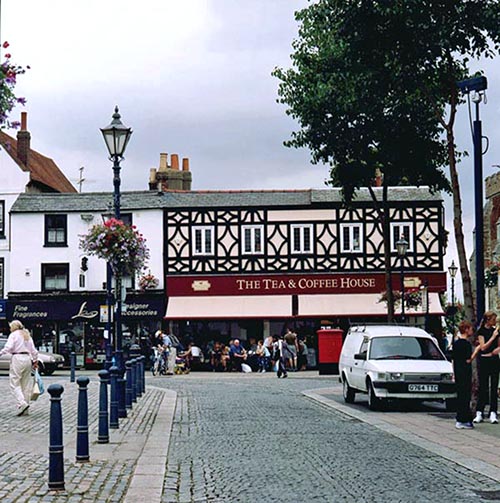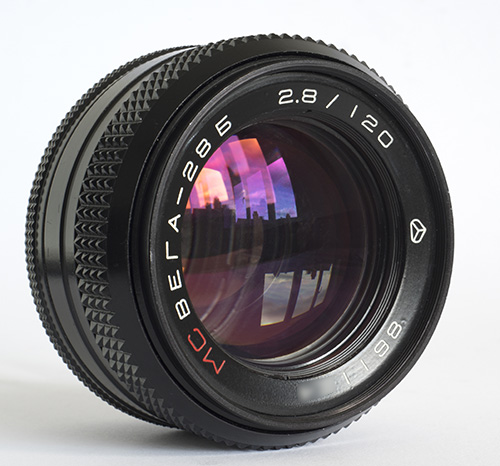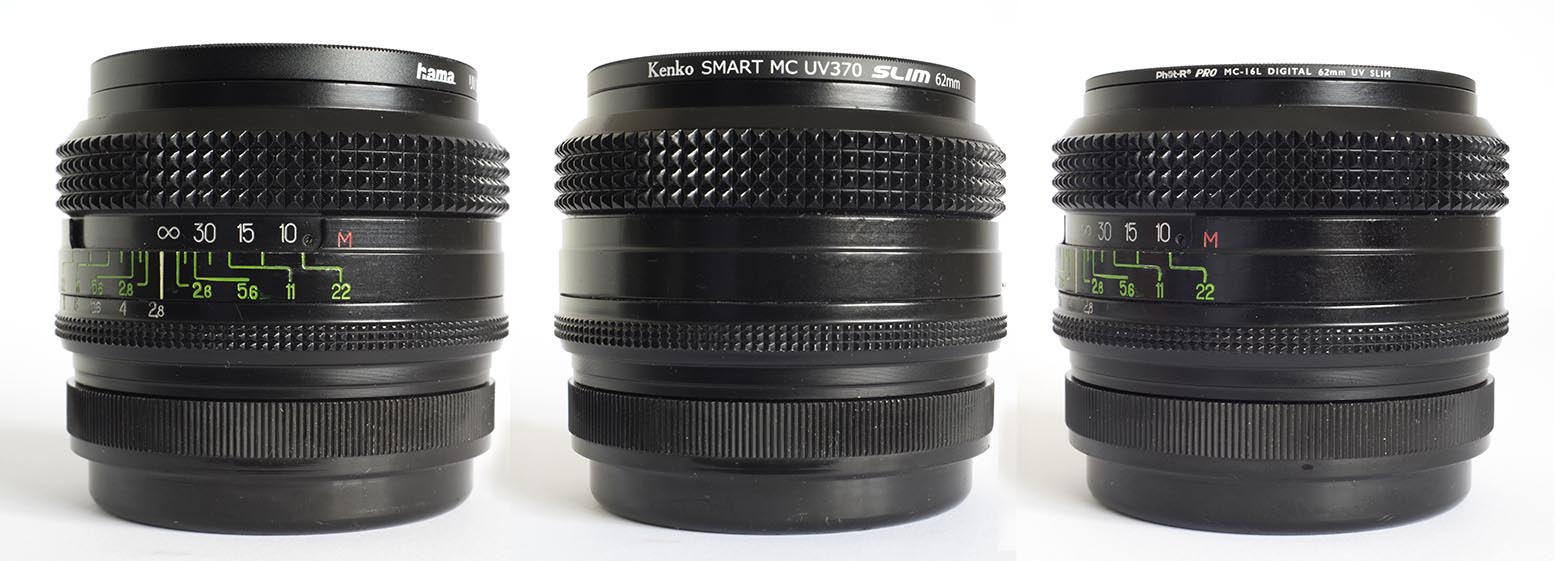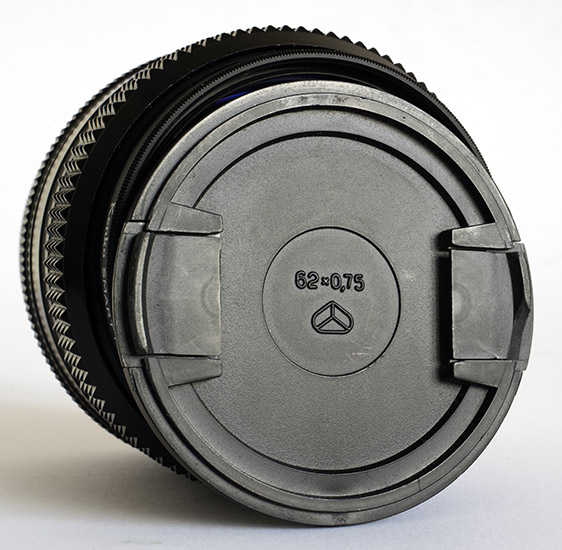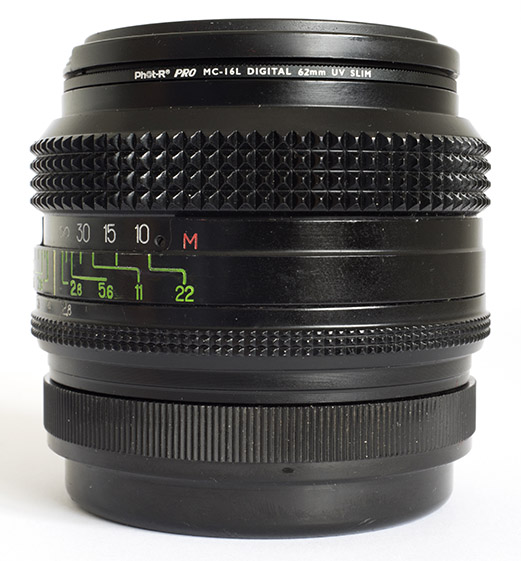|
Medium Format Lenses with the Pentacon
Six Mount
A comparative test by TRA 120-140mm
At f/2.8 the Carl Zeiss Jena MC Biometar produces a very satisfactory image across the whole of the frame, for the plane focussed on. The shop signs look sharp, although the loupe does reveal a slight lack of resolving power for some very small details (e.g., the cream-coloured sign on the Tea & Coffee House sign). At f/11 this has sharpened up so that with a loupe I can read the lettering on this sign. Likewise, the roof tiles have sharpened up across the frame. At this aperture, the 120mm Biometar is as sharp and contrasty as – if not sharper than – the best of the 80mm lenses at f/11 – but then one would expect to see more detail, as the view is magnified 50% more than with the standard lens.
The
120mm Arsenal Vega lens After completing the original
comparative lens tests in Hitchin I purchased the
Arsenal Vega 120mm f/2.8 lens. This has not yet been
tested in the same place, although two pictures
taken with it can be seen here. This is what the 120mm Vega looks
like: |
||
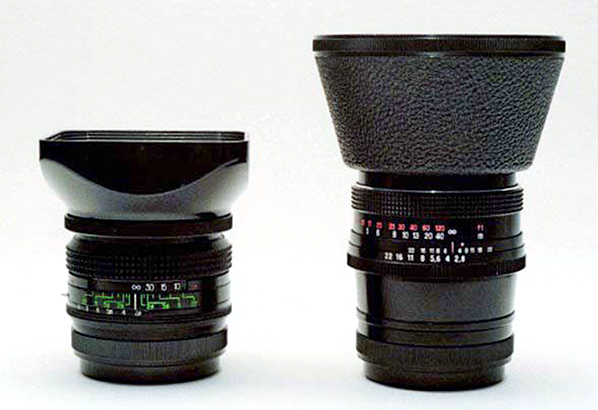 The 120mm Arsenal Vega lens (l) and the 120mm Carl Zeiss Jena Biometar (r), each with its lens hood fitted. [C306-31] |
This lens has a
fractionally longer focal length than the
120mm Biometar, i.e., it covers a fractionally narrower
field of view. However, physically, it is hardly
larger than the 80mm Arsenal Volna standard
lens. See the size comparison in the image to
the right here. In November 2008 I wrote here: “unfortunately, it is not possible to close the Pentacon Six “ever-ready” case with the Vega fitted to the camera.” In June 2019 I received an e-mail from a visitor to this website from Russia who told me, “You can freely close the ever ready case if your helicoid on the Vega 28 retracted to the minimum.” I checked, and this is correct. Thank you for your correction! |
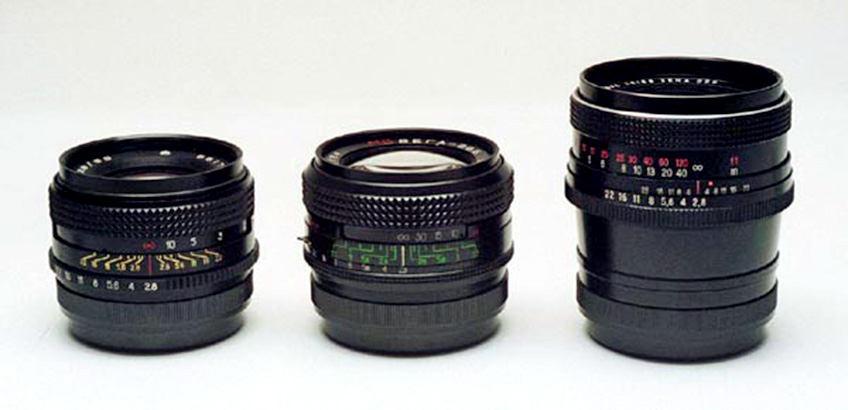 The Arsenal Vega
120mm lens, in the middle, compared with the Arsenal
80mm Volna standard lens, on the left, and the Carl
Zeiss Jena 120mm Biometar on the right.
[C306-29]
|
